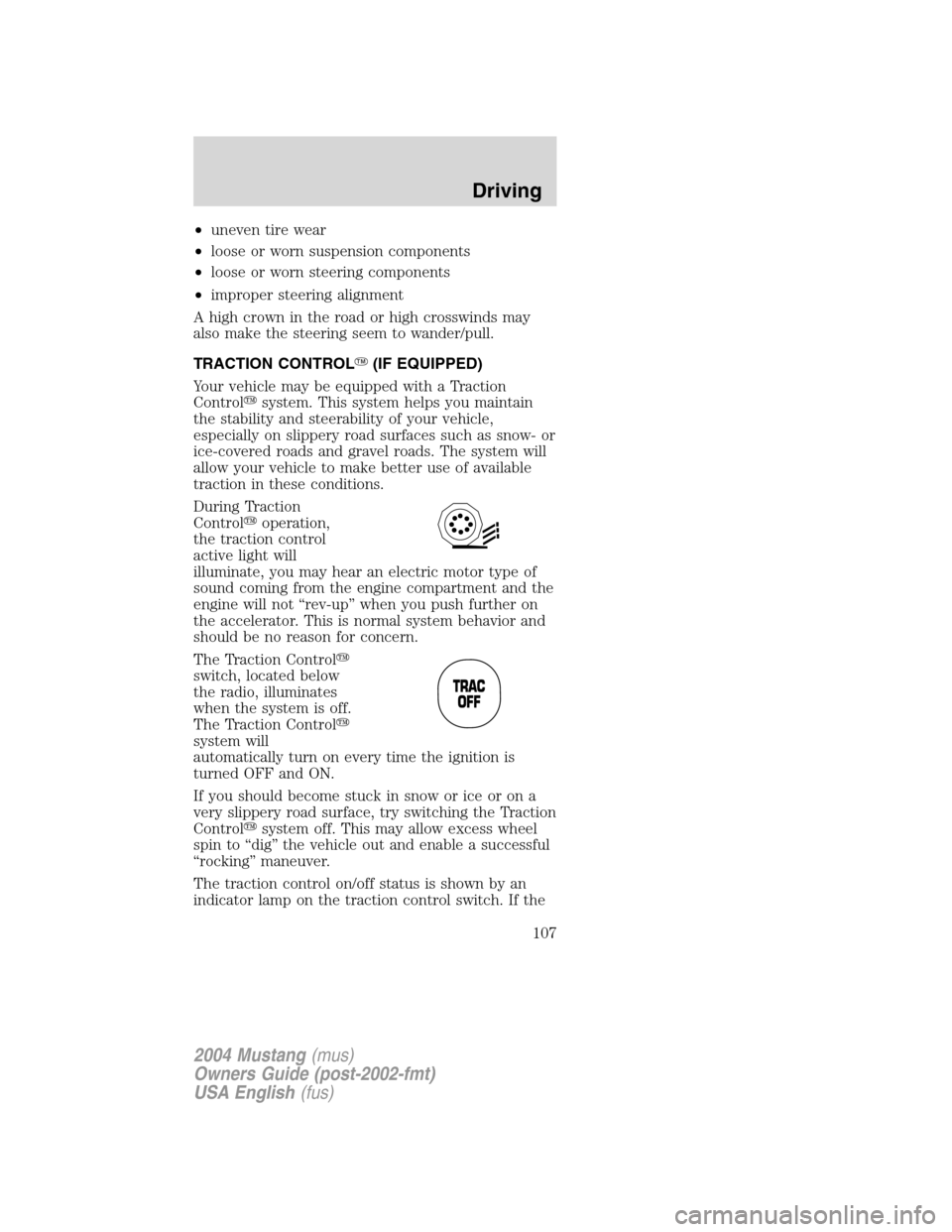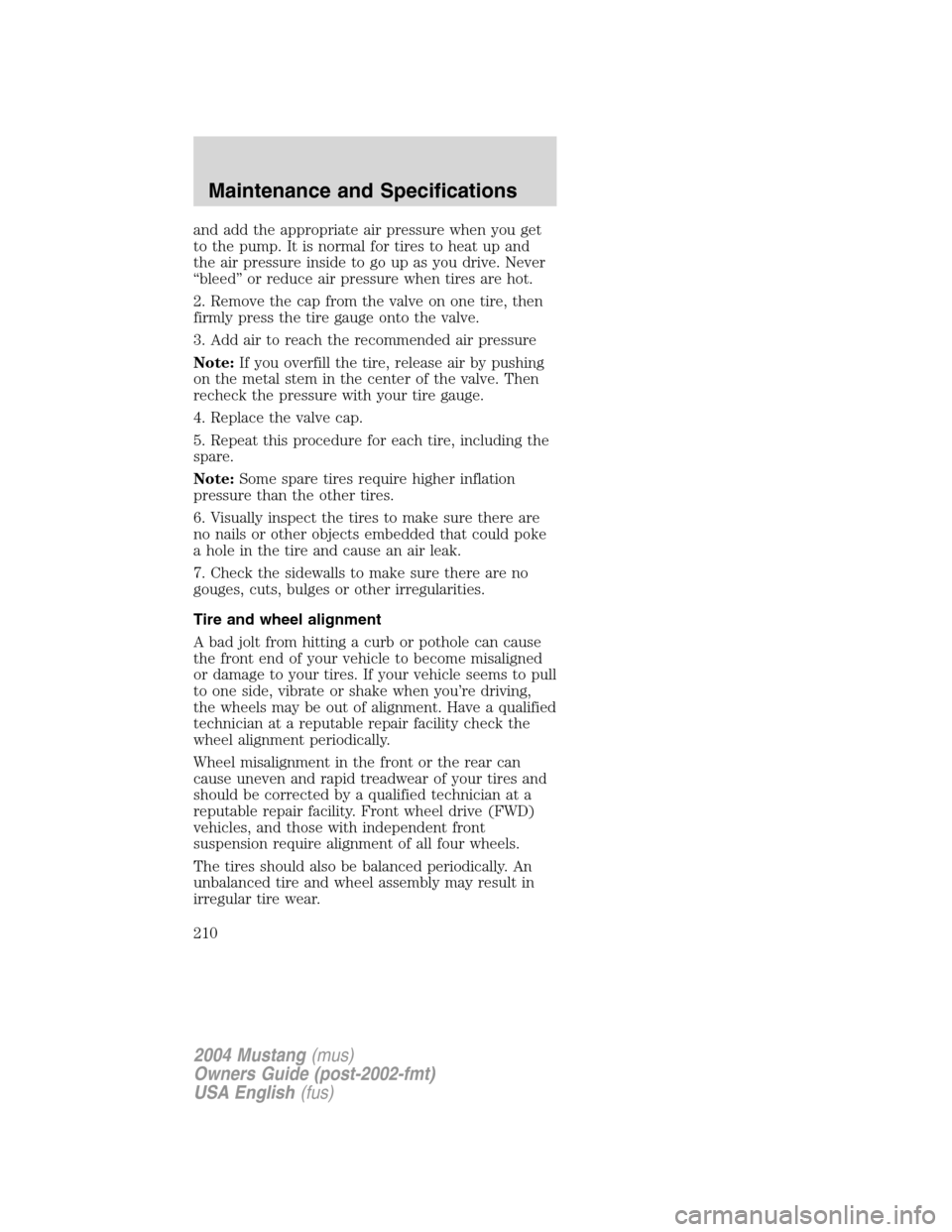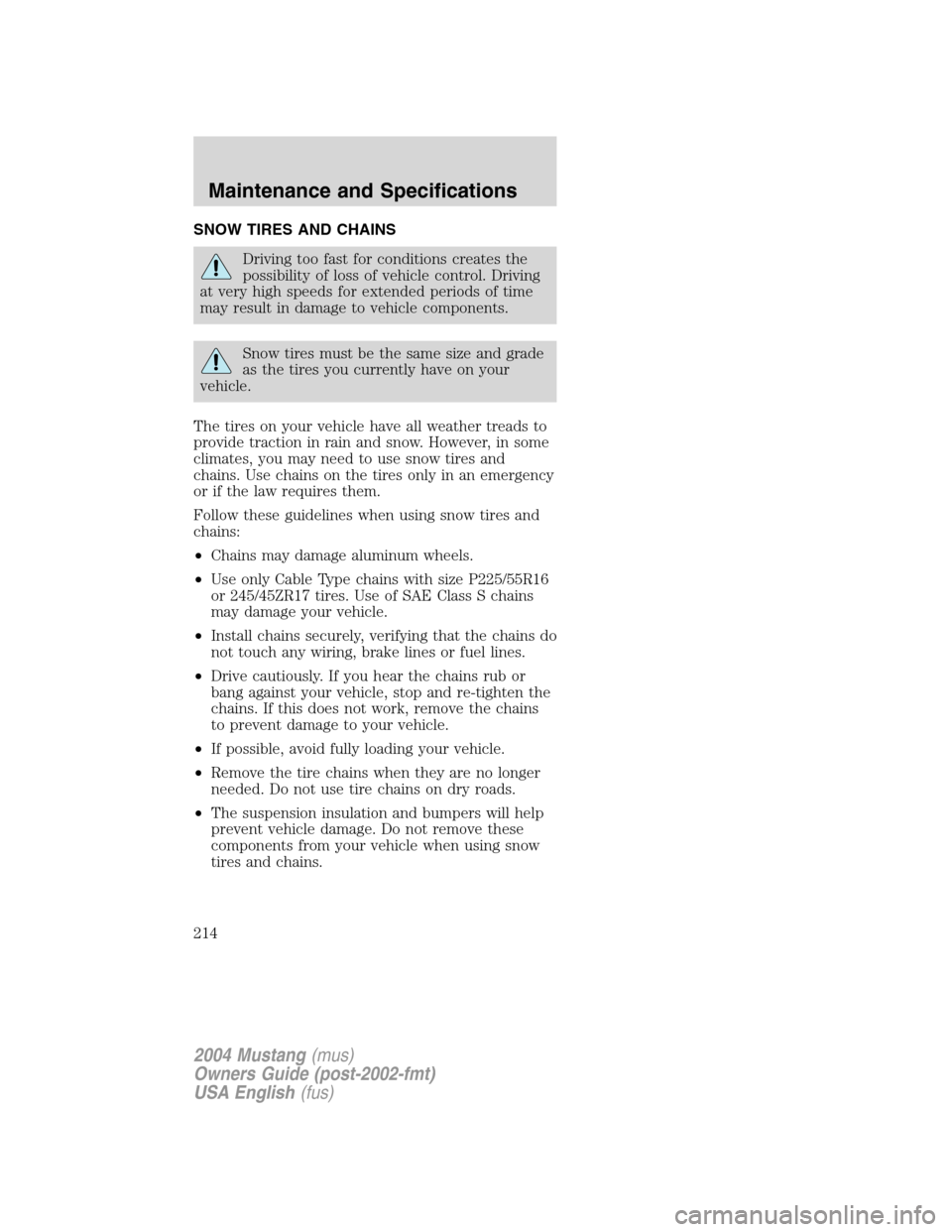Page 107 of 240

•uneven tire wear
•loose or worn suspension components
•loose or worn steering components
•improper steering alignment
A high crown in the road or high crosswinds may
also make the steering seem to wander/pull.
TRACTION CONTROL�(IF EQUIPPED)
Your vehicle may be equipped with a Traction
Control�system. This system helps you maintain
the stability and steerability of your vehicle,
especially on slippery road surfaces such as snow- or
ice-covered roads and gravel roads. The system will
allow your vehicle to make better use of available
traction in these conditions.
During Traction
Control�operation,
the traction control
active light will
illuminate, you may hear an electric motor type of
sound coming from the engine compartment and the
engine will not“rev-up”when you push further on
the accelerator. This is normal system behavior and
should be no reason for concern.
The Traction Control�
switch, located below
the radio, illuminates
when the system is off.
The Traction Control�
system will
automatically turn on every time the ignition is
turned OFF and ON.
If you should become stuck in snow or ice or on a
very slippery road surface, try switching the Traction
Control�system off. This may allow excess wheel
spin to“dig”the vehicle out and enable a successful
“rocking”maneuver.
The traction control on/off status is shown by an
indicator lamp on the traction control switch. If the
2004 Mustang(mus)
Owners Guide (post-2002-fmt)
USA English(fus)
Driving
107
Page 210 of 240

and add the appropriate air pressure when you get
to the pump. It is normal for tires to heat up and
the air pressure inside to go up as you drive. Never
“bleed”or reduce air pressure when tires are hot.
2. Remove the cap from the valve on one tire, then
firmly press the tire gauge onto the valve.
3. Add air to reach the recommended air pressure
Note:If you overfill the tire, release air by pushing
on the metal stem in the center of the valve. Then
recheck the pressure with your tire gauge.
4. Replace the valve cap.
5. Repeat this procedure for each tire, including the
spare.
Note:Some spare tires require higher inflation
pressure than the other tires.
6. Visually inspect the tires to make sure there are
no nails or other objects embedded that could poke
a hole in the tire and cause an air leak.
7. Check the sidewalls to make sure there are no
gouges, cuts, bulges or other irregularities.
Tire and wheel alignment
A bad jolt from hitting a curb or pothole can cause
the front end of your vehicle to become misaligned
or damage to your tires. If your vehicle seems to pull
to one side, vibrate or shake when you’re driving,
the wheels may be out of alignment. Have a qualified
technician at a reputable repair facility check the
wheel alignment periodically.
Wheel misalignment in the front or the rear can
cause uneven and rapid treadwear of your tires and
should be corrected by a qualified technician at a
reputable repair facility. Front wheel drive (FWD)
vehicles, and those with independent front
suspension require alignment of all four wheels.
The tires should also be balanced periodically. An
unbalanced tire and wheel assembly may result in
irregular tire wear.
2004 Mustang(mus)
Owners Guide (post-2002-fmt)
USA English(fus)
Maintenance and Specifications
210
Page 214 of 240

SNOW TIRES AND CHAINS
Driving too fast for conditions creates the
possibility of loss of vehicle control. Driving
at very high speeds for extended periods of time
may result in damage to vehicle components.
Snow tires must be the same size and grade
as the tires you currently have on your
vehicle.
The tires on your vehicle have all weather treads to
provide traction in rain and snow. However, in some
climates, you may need to use snow tires and
chains. Use chains on the tires only in an emergency
or if the law requires them.
Follow these guidelines when using snow tires and
chains:
•Chains may damage aluminum wheels.
•Use only Cable Type chains with size P225/55R16
or 245/45ZR17 tires. Use of SAE Class S chains
may damage your vehicle.
•Install chains securely, verifying that the chains do
not touch any wiring, brake lines or fuel lines.
•Drive cautiously. If you hear the chains rub or
bang against your vehicle, stop and re-tighten the
chains. If this does not work, remove the chains
to prevent damage to your vehicle.
•If possible, avoid fully loading your vehicle.
•Remove the tire chains when they are no longer
needed. Do not use tire chains on dry roads.
•The suspension insulation and bumpers will help
prevent vehicle damage. Do not remove these
components from your vehicle when using snow
tires and chains.
2004 Mustang(mus)
Owners Guide (post-2002-fmt)
USA English(fus)
Maintenance and Specifications
214